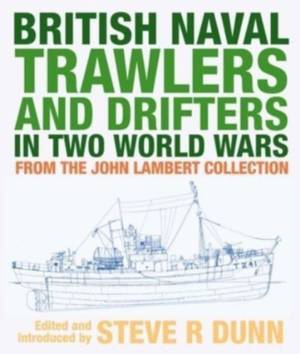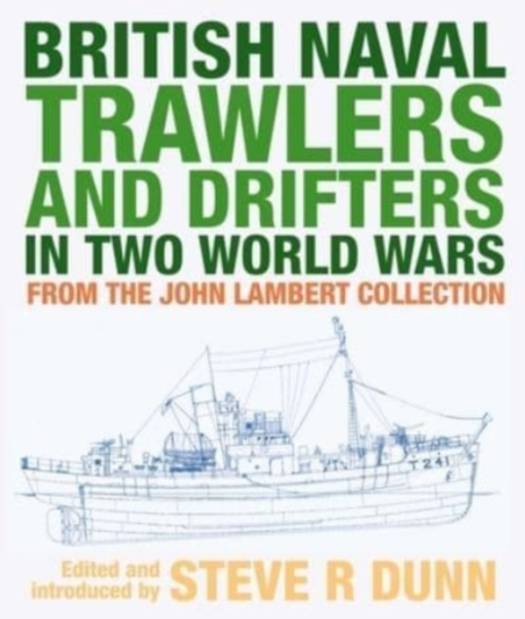
En raison d'une grêve chez bpost, votre commande pourrait être retardée. Vous avez besoin d’un livre rapidement ? Nos magasins vous accueillent à bras ouverts !
- Retrait gratuit dans votre magasin Club
- 7.000.000 titres dans notre catalogue
- Payer en toute sécurité
- Toujours un magasin près de chez vous
En raison de la grêve chez bpost, votre commande pourrait être retardée. Vous avez besoin d’un livre rapidement ? Nos magasins vous accueillent à bras ouverts !
- Retrait gratuit dans votre magasin Club
- 7.000.0000 titres dans notre catalogue
- Payer en toute sécurité
- Toujours un magasin près de chez vous
British Naval Trawlers and Drifters in Two World Wars
From the John Lambert Collection
Steve Dunn
Livre relié | Anglais
48,95 €
+ 97 points
Description
John Lambert was a renowned naval draftsman, whose plans were highly valued for their accuracy and detail by model makers and enthusiasts. By the time of his death in 2016, he had produced over 850 sheets of drawings, many of which have never been published. These were acquired by Seaforth and this title is the fourth of a planned series of albums on selected themes, reproducing complete sheets at a large page size, with expert commentary and captioning.
Trawlers and drifters served in both world wars in their thousands; and, in their tens of thousands, so did their fishermen crews. Indeed, these humble craft were the most numerous vessel type used by the Royal Navy in both wars, and were the answer to the strategic or tactical conundrums posed by new technology of mines and submarines. In his accompanying text, Steve Dunn examines the ships themselves, their design, construction, arming, operations, and development; and he also relates how the trawlermen and skippers, from the age-old fishing ports of Grimsby, Hull, Lowestoft, Great Yarmouth, Aberdeen, and Fleetwood, came to be part of the Royal Navy, and describes the roles they played, the conditions they served under and the bravery they showed.
The book takes some 30 large sheets of drawings which John Lambert completed of these vessels and divides into two sections. The first part tells how the fishing fleet came to be an integral part of the Royal Navy's pre-1914 plans and details some of the activities and actions of trawlers and drifters at war in 1914-18. And the second investigates the armed fishing fleet in the struggle of 1939-45.
These wonderfully detailed drawings, which are backed by a selection of photographs and a detailed complementary text, offer a superb technical archive for enthusiasts and ship modelers, but the book also tells a fascinating story of the extraordinary contribution the vessels and their crews made to the defeat of Germany in two world wars.
Trawlers and drifters served in both world wars in their thousands; and, in their tens of thousands, so did their fishermen crews. Indeed, these humble craft were the most numerous vessel type used by the Royal Navy in both wars, and were the answer to the strategic or tactical conundrums posed by new technology of mines and submarines. In his accompanying text, Steve Dunn examines the ships themselves, their design, construction, arming, operations, and development; and he also relates how the trawlermen and skippers, from the age-old fishing ports of Grimsby, Hull, Lowestoft, Great Yarmouth, Aberdeen, and Fleetwood, came to be part of the Royal Navy, and describes the roles they played, the conditions they served under and the bravery they showed.
The book takes some 30 large sheets of drawings which John Lambert completed of these vessels and divides into two sections. The first part tells how the fishing fleet came to be an integral part of the Royal Navy's pre-1914 plans and details some of the activities and actions of trawlers and drifters at war in 1914-18. And the second investigates the armed fishing fleet in the struggle of 1939-45.
These wonderfully detailed drawings, which are backed by a selection of photographs and a detailed complementary text, offer a superb technical archive for enthusiasts and ship modelers, but the book also tells a fascinating story of the extraordinary contribution the vessels and their crews made to the defeat of Germany in two world wars.
Spécifications
Parties prenantes
- Auteur(s) :
- Editeur:
Contenu
- Nombre de pages :
- 208
- Langue:
- Anglais
Caractéristiques
- EAN:
- 9781526794864
- Date de parution :
- 11-03-22
- Format:
- Livre relié
- Format numérique:
- Genaaid
- Dimensions :
- 252 mm x 292 mm
- Poids :
- 1451 g

Les avis
Nous publions uniquement les avis qui respectent les conditions requises. Consultez nos conditions pour les avis.






